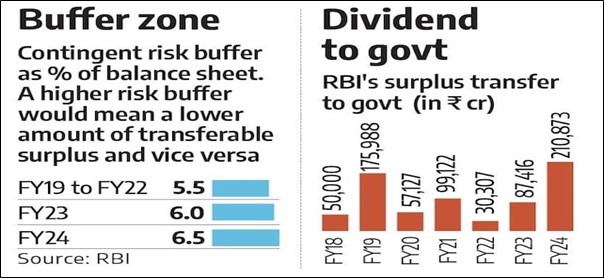7667766266
enquiry@shankarias.in
Prelims: Indian Economy | Current events of national and international importance
Why in News
Recently, the Reserve Bank of India’s (RBI’s) central board has sought the government’s approval to expand the range of the contingent risk buffer (CRB).
The Economic Capital Framework adopted in 2019, based on the Bimal Jalan Committee's recommendations, stipulates that a specific portion of the Reserve Bank of India's (RBI) surplus earnings is allocated to a Contingency Risk Buffer (CRB), while the remaining surplus is transferred to the Government of India.
|
Status of CRB in Recent Years |
|

RBI’s Central Board
Reference
Related News – RBI’s Surplus Transfer to Government